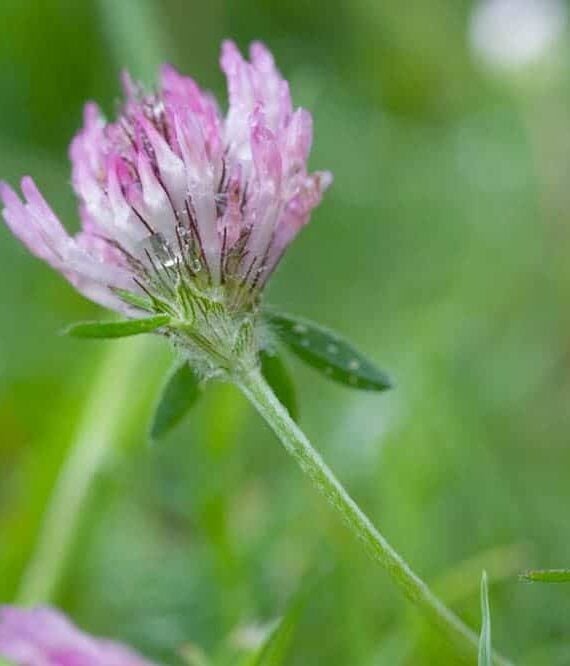Description
Red clover is the familiar pink or purple-pink flowered clover of grassland and waysides. It is short lived perennial with upright, sometimes luxuriant, leafy growth. It its large trefoil leaves have a distinct whitish crescent on each leaflet. Agricultural varieties of red clover (var. sativum) are more robust and erect than wild red clover (var. pratense) and can reach 60cm or more.
Habitat information
Agricultural varieties of red clover have been widely sown on farmland since the 17/18th century and can be found as a relic of this usage in older grasslands on waysides and waste ground. It occurs mainly on moist but free-draining soils with full sun.
In agriculture clover was mainly grown as part of a crop rotation in short-term grass leys to provide hay or silage and to fix nitrogen. Its role in recent decades has been largely replaced by chemical fertilisers and its use declined.
Growing information
Red clover can be sown at any time of the year when soil and weather conditions are suitable. As young seedlings cultivated clover is more susceptible slug and frost damage so is best sown in good growing conditions in spring or summer, ideally by the end of August.
With good growing conditions the growth of red clover is rapid and vigorous making it useful as a cover crop to suppress weeds. With its ability to fix atmospheric nitrogen via its root nodules it is valuable as a fertility building crop for low input farming and land reclamation.
Red clover is one of the best sources of pollen and nectar for long-tongued bumble bees and other insects. Honey bees will also forage on red clover but with short tongues rob nectar by biting through the sides of flowers without pollinating the plants. It is included in economy pollinator mixtures for sowing in farm stewardship schemes such as our ESF3.
Agricultural red clover varieties produce tall, lax smothering mass of growth in summer. For this reason, they are not generally suited for inclusion in habitat mixtures with wild flowers. The agricultural red clovers are not long lived or persistent, particularly with regular cutting or grazing, and need replacement from seed after 3 or 4 years.
Agricultural red clover varieties are categorised as one of two types: Early flowering red clover (also known as broad red clover) and Late flowering red clover. The varieties we offer in our grazing mixtures are of the late flowering type which are not quite as vigorous, hardier and more tolerant of grazing than the early varieties. Red clover with or without grass produces highly nutritious protein rich hay or silage.
Suggested sowing rate is 0.1 – 1.5g/m2 or 2 -5% in a mixture.

